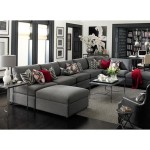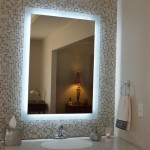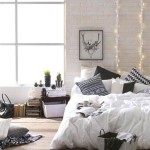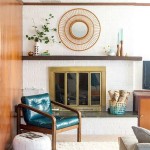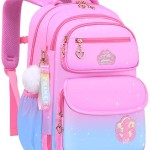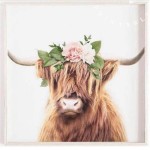DIY Baby Room Decor: A Guide to Personalized Nursery Design
Creating a welcoming and nurturing environment for a newborn is a significant undertaking for expectant parents. While commercially available baby room décor options are plentiful, a do-it-yourself (DIY) approach offers the opportunity to personalize the space, infuse it with unique charm, and potentially save money. This article provides guidance on various DIY baby room décor projects, emphasizing safety, functionality, and aesthetic appeal.
Planning and Preparation
Before embarking on any DIY project, careful planning is crucial. This involves assessing the existing room, determining a budget, and establishing a theme or color palette. Consider the size of the room, window placement, and existing furniture. A well-defined plan will prevent impulsive decisions and ensure a cohesive and aesthetically pleasing final result. Begin by measuring the room accurately. This is critical for determining the size of wall décor, furniture placement, and the amount of materials needed. Document the measurements in a notebook or digital document for easy reference throughout the project.
Next, establish a budget. DIY projects can be cost-effective, but it's important to track expenses to avoid overspending. Research the cost of materials, tools, and any potential labor. Allocate funds for each aspect of the project, and be prepared to adjust the budget as needed. Consider repurposing existing items to further reduce costs. Old furniture can be refinished and updated with new hardware and paint to match the nursery's theme. Fabric scraps can be used for creating decorative pillows or elements for a mobile.
Selecting a theme or color palette is essential for creating a visually harmonious space. Consider the parents' preferences, the baby's gender (if known), and the overall desired atmosphere. Neutral color palettes, such as grays, creams, and whites, provide a calming and versatile backdrop that can be accented with pops of color. Nature-inspired themes, featuring animals, plants, or landscapes, are also popular choices. Ensure the chosen theme is easy to implement through DIY projects and avoids overly complex or potentially hazardous elements.
Prioritize safety throughout the planning process. Choose non-toxic paints, adhesives, and fabrics that are specifically designed for children's environments. Avoid using small, detachable parts that could pose a choking hazard. Securely mount any wall décor or furniture to prevent accidents. Thoroughly research the safety guidelines for each DIY project before beginning.
DIY Wall Decor Ideas
Wall décor plays a significant role in defining the character of a baby room. Instead of relying solely on store-bought items, consider creating unique and personalized wall decorations. Several options are available, ranging from simple art prints to more elaborate murals.
One accessible option is creating framed art prints. Download or design digital artwork and print it on high-quality paper. Purchase inexpensive frames from craft stores and customize them with paint or embellishments to match the room's theme. Consider creating a gallery wall featuring a collection of prints, photographs, and other decorative elements. Ensure the frames are securely mounted to the wall at an appropriate height, keeping them out of the baby's reach.
Another possibility involves painting a mural. While this requires more artistic skill, even simple designs can add a personal touch. Use stencils to create repeating patterns or freehand paint a landscape or whimsical scene. Opt for water-based, non-toxic paints specifically designed for interior use. Prepare the wall surface by cleaning and priming it before applying the paint. Sketch the design lightly on the wall before painting to ensure accuracy and proper proportions.
Fabric wall hangings offer a textural alternative to traditional art. Create a quilted wall hanging using fabric scraps in coordinating colors. Alternatively, stretch fabric over a wooden frame to create a simple yet elegant piece of wall art. Consider using fabric with a pattern that complements the room's theme or color palette. Ensure the fabric is securely attached to the frame and free of loose threads or embellishments that could detach and pose a hazard.
Personalized initial letters are a popular choice for baby room décor. Purchase wooden or cardboard letters from a craft store and decorate them with paint, fabric, or embellishments. Consider adding the baby's name or a meaningful quote. Mount the letters on the wall above the crib or changing table, ensuring they are securely attached and out of the baby's reach. These letters can also be displayed on a shelf or dresser.
Using removable wall decals is a convenient and non-permanent way to add visual interest to the walls. These decals are available in a wide range of designs, from simple polka dots to intricate scenes. They are easy to apply and remove, making them ideal for renters or those who prefer to change the décor frequently. Ensure the decals are made from non-toxic materials and are securely adhered to the wall to prevent them from peeling and becoming a choking hazard.
DIY Mobiles and Hanging Decorations
Mobiles and hanging decorations can add a touch of whimsy and visual stimulation to a baby room. These decorations are typically suspended from the ceiling above the crib or changing table, providing a source of entertainment and visual interest for the baby. When making DIY mobiles and hanging decorations, safety should be the top priority.
One simple option is creating a mobile using felt shapes. Cut out various shapes from felt, such as animals, stars, or clouds, and sew them together to create a three-dimensional mobile. Use non-toxic thread and securely attach the shapes to a wooden or metal hoop. Suspend the hoop from the ceiling using sturdy string or wire. Ensure the mobile is hung high enough so that the baby cannot reach it. Regularly inspect the mobile for any signs of wear or tear.
Another possibility involves creating a paper mobile using origami or paper cutouts. Fold origami cranes or other shapes from colorful paper and string them together to create a visually appealing mobile. Alternatively, cut out shapes from cardstock or construction paper and attach them to a wire or wooden frame. Ensure the paper is lightweight and does not pose a hazard if it falls. Consider using acid-free paper to prevent discoloration over time.
Yarn pom-poms can be used to create a colorful and textured mobile. Make pom-poms of varying sizes and colors using yarn and a pom-pom maker. Attach the pom-poms to a hoop or frame using glue or string. Ensure the glue is non-toxic and the pom-poms are securely attached. Consider adding beads or other embellishments to the mobile for added visual interest. Regularly inspect the mobile for any loose yarn or embellishments.
Dried flowers or leaves can be used to create a natural and aesthetically pleasing mobile. Gather dried flowers or leaves and arrange them on a hoop or frame. Secure the flowers or leaves using glue or wire. Ensure the flowers or leaves are thoroughly dried to prevent mold growth. Consider adding a sealant to protect the flowers or leaves from damage. This type of mobile can add a touch of natural beauty to the baby room.
String lights can be incorporated into a mobile or hung as a decorative element. Choose LED string lights that are cool to the touch and energy-efficient. Drape the lights around a mobile frame or hang them along the wall. Ensure the lights are safely secured and out of the baby's reach. Never leave the lights unattended while the baby is in the room. String lights can create a warm and inviting atmosphere in the baby room.
DIY Furniture and Accessories
Beyond wall décor, consider DIY furniture and accessories to further personalize the baby room. Refinishing existing furniture, creating custom storage solutions, and crafting unique accessories can add character and functionality to the space.
Refinishing an old dresser or changing table can transform it into a stylish and functional piece of furniture for the baby room. Sand down the existing finish and apply a fresh coat of paint in a color that complements the room's theme. Replace the hardware with new knobs or pulls to update the look. Ensure the paint is non-toxic and specifically designed for children's environments. Consider adding a changing pad to the top of the dresser to create a convenient changing station.
Creating custom storage solutions can help keep the baby room organized and clutter-free. Build shelves or cubbies to store books, toys, and other baby essentials. Use fabric bins or baskets to organize smaller items. Consider adding labels to the storage containers to easily identify the contents. Ensure the storage solutions are securely mounted to the wall to prevent them from tipping over. Maximize vertical space by utilizing wall-mounted shelves and organizers.
Sewing custom crib sheets, blankets, and pillows can add a personal touch to the baby's bedding. Choose soft, breathable fabrics in coordinating colors or patterns. Follow a sewing pattern or tutorial to create the desired items. Ensure the seams are securely sewn and the edges are finished to prevent fraying. Avoid using embellishments or small parts that could detach and pose a choking hazard. Regularly wash the bedding in hot water to kill germs and allergens.
Creating a personalized growth chart is a fun and sentimental way to track the baby's growth. Paint a wooden board or canvas with a design or pattern. Add markings to indicate height in inches or centimeters. Hang the growth chart on the wall and mark the baby's height at regular intervals. This will create a lasting record of the baby's growth and development. Ensure the growth chart is securely mounted to the wall at an appropriate height.
Making a custom mobile arm is a more advanced DIY project that requires careful planning and execution. Design a mobile arm that is sturdy and stable. Use wood or metal materials to construct the arm. Ensure the arm is securely attached to the crib and is positioned at a safe distance from the baby. Test the arm thoroughly before attaching a mobile to it. This project requires advanced woodworking or metalworking skills.

22 Best Diy Baby Room Decor Ideas For A Dreamy Nursery In 2025
11 Do It Yourself Baby Room Decorations Teckwrapcraft

Pin On Nursery Inspo

Nursery Room Ideas Baby Diys Dear Creatives

22 Terrific Diy Ideas To Decorate A Baby Nursery Woohome

Pin On Great Craft Ideas

16 Diy Nursery Decor Ideas Design Studio

34 Diy Nursery Decor Ideas

Baby Girl Nursery Diy Decorating Ideas Repeat Crafter Me

Neutral Diy Nursery Decor For An Easy Baby Room Start At Home
